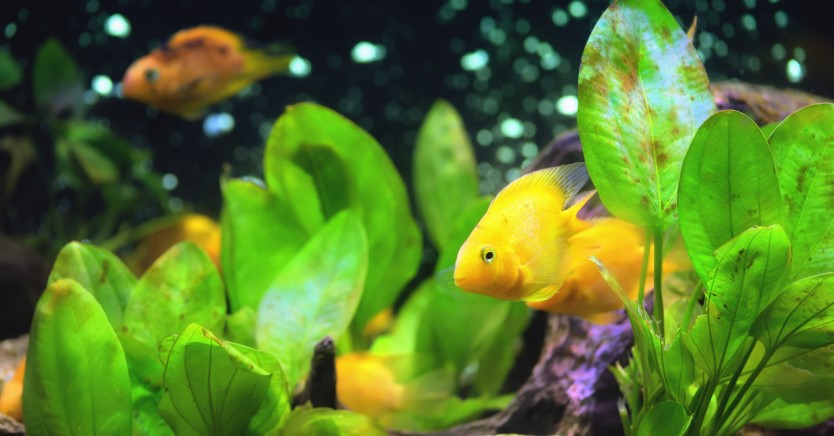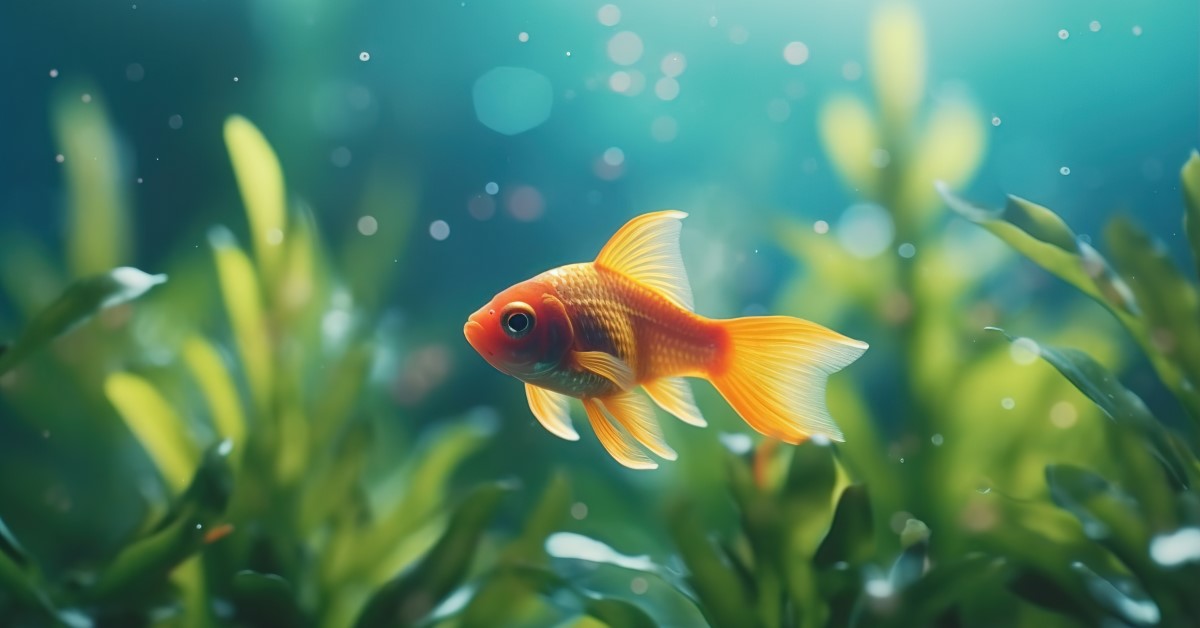Neon Tetra: Color-Changing Magic
Neon tetras are small, colorful freshwater fish that make excellent pets for beginner and novice fish owners alike.

Looking for a colorful addition to your freshwater fish tank? The neon tetra is an excellent choice. This colorful species is known for its glowing neon stripe that often changes hues depending on its environment, viewing angle, and mood. With their peaceful disposition and low maintenance requirements, neon tetras are often touted as beginner fish. However, like all pet fish, neon tetras require proper care to keep them healthy and active. Let’s take a closer look at this popular fish species and what you can expect when you introduce one to your freshwater tank.
A Brief History of the Neon Tetra
Originally imported from South America, neon tetras (Paracheirodon innesi) are small, vibrantly colored fish typically kept in groups of six or more. Neon tetras were first discovered in the early 1930s and quickly gained popularity among aquarium enthusiasts for their striking iridescent red and blue coloration and tranquil temperament.
The species was named after William T. Innes, a pioneering American aquarist who played a significant role in popularizing neon tetras through his writings and continuous efforts to import them into the U.S. Soon after their discovery, commercial breeding began. Southeast Asia and Germany became the major hubs for large-scale cultivation.
Neon Tetra Physical Characteristics and Behaviors
Neon tetras are slender fish that grow to about 1.5 inches in length. While they’re best known for their bright stripe that runs horizontally from their nose to the base of their adipose fin, there’s much more to this species than their bold color.
These amazing creatures can alter the color of their stripes in response to stimuli. For example, a blue stripe may appear blue-green when in the light, and indigo in the dark. This color change is achieved by shifting reflective crystal structures.
In terms of behavior, neon tetras are considered a peaceful species. As schooling fish, they thrive in groups and can often be seen synchronized swimming or moving in tight formations, which helps them feel more secure and reduces stress.
When placed in a well-maintained fish tank, they are curious, active, and generally non-aggressive. This makes them an ideal species for community aquariums. Neon tetras do best in soft, slightly acidic water with subdued lighting.
Neon Tetra Habitat and Care
In the wild, neon tetras inhabit slow-moving, tannin-rich blackwater streams and tributaries of the Amazon Basin. These waters are typically shaded by dense jungle canopy, creating a dimly lit environment filled with submerged roots, leaf litter, and aquatic vegetation.
To replicate this natural habitat in a home aquarium, provide a sheltered setting with low light that helps neon tetras feel safe and displays their vibrant colors. Incorporate a variety of live plants, including tall background plants and floating species, such as water lettuce. These can help diffuse light and create a more natural and shaded environment.
Adding twisted roots and driftwood can create hiding spots while elevating the aesthetics of your tank. A dark-colored substrate, such as fine gravel or black sand, can further mimic the riverbed and reduce light reflection, helping the fish remain at ease.
Neon Tetra Diet and Feeding
Neon tetras are omnivorous and have relatively simple dietary needs, making them easy to feed in home fish tanks. In the wild, they consume a varied diet of small insects, tiny crustaceans, larvae, and plant matter. You can mimic this variety at home with a balanced diet that includes micro pellet foods or high-quality flakes designed for small tropical fish.
For optimal health, it’s best to supplement your fish’s diet with occasional live or frozen food, such as bloodworms, brine shrimp, or daphnia. These protein-rich treats can help stimulate natural hunting behaviors and improve growth. Feed your fish once or twice daily, offering only as much food as it can consume within a few minutes to avoid overfeeding and water-quality issues.
Remember to maintain a consistent feeding schedule and avoid sudden changes to your pet’s diet, as this can induce stress. Neon tetras are small but require a stable, balanced diet to stay healthy and maintain their colorful stripes.
Neon Tetra Common Health Problems
Neon tetras are generally hardy fish, but they can be susceptible to several common health problems, especially if water conditions are poor or if they experience chronic stress. One of the most well-known diseases that affects neon tetras is known as “neon tetra disease,” caused by a parasite called Pleistophora hyphessobryconis. This condition causes symptoms such as color fading, loss of fins, cysts, and difficulty swimming.
Other common issues that can arise include bacterial infections, which can lead to fin rot, ulcers, and lethargy. These infections may be caused by poor water quality or injuries. Parasites, such as ich (white spot disease), are also common but can generally be treated with the appropriate medication.
Stress, caused by factors like sudden changes in water parameters, overcrowding, or aggressive tank mates, weakens the immune system and makes neon tetras more prone to illness. Maintaining stable water conditions, regular tank maintenance, and providing a peaceful environment can greatly reduce the risk of health issues.
Caring for a Neon Tetra
Neon tetras can be a vibrant and peaceful addition to any freshwater aquarium. By understanding their natural habitat, dietary needs, and potential health concerns, aquarists can create an ideal environment that promotes well-being and longevity.
Ready to start saving money on pet wellness care?
Then take a look at Mint Wellness, the pet wellness plan that provides fast reimbursement on routine pet care. Save on vaccinations, wellness exams, preventatives, dental, and more!
Learn More


